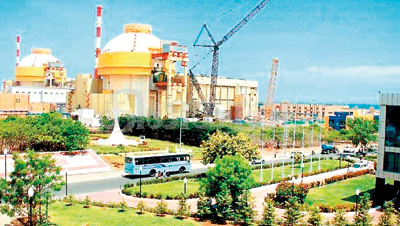News
Is India’s nuclear safety worth only 500 rupees?
BANGALORE, (Reuters) – While India has produced many “ready at hand” atomic experts, as nuclear physicist Homi Bhabha predicted in 1944, they have failed to address nuclear safety concerns.
The Comptroller and Auditor General (CAG) pulled up the government last week for not implementing such a policy. Under the current system, the maximum penalty that can be levied on a nuclear plant operator for violating safety guidelines is a paltry 500 rupees.

The Kudankulam nuclear plant: A nuclear safety bill yet to be signed into law.
The Japan Centre for Economic Research has estimated that it could cost up to $250 billion for the clean-up at Fukushima, a nuclear crisis triggered by a deadly earthquake and tsunami on March 11 last year. Considering this, the penalty in India for safety violations seems like a joke. Twenty-eight years since the Bhopal gas tragedy, the government is still struggling to deliver justice to victims of the disaster. Continuing under the current nuclear safety policy could lead to graver threats than Bhopal.
India’s nuclear ambitions and technology have been inspired by developed nations like France, Australia, Canada and the United States. But again, we have conveniently forgotten to ensure safety policies that these nations already have in place.
All these nations have an independent nuclear regulator unlike India and the CAG has raised concerns over the legal status of India’s Atomic Energy Regulatory Board (AERB).
The AERB and the Nuclear Power Corporation of India, the sole promoter of commercial nuclear power plants, are subordinate to the Department of Atomic Energy, which raises the possibility of a conflict of interest.
Policy makers have tried to provide a solution to this problem in the nuclear safety bill, which was first introduced in the lower house of parliament in September 2011. The bill proposes to establish a legal authority and an independent regulatory body for nuclear safety. But one year since its introduction, the bill is yet to be signed into law.
The issues raised by the state auditor on AERB bring us back to the role of our “ready at hand” experts. More than 20 scientists and experts have so far visited a small fishing hamlet in Tamil Nadu called Idinthakarai to create “awareness” on the safety aspects of the Kudankulam nuclear power plant that has come up near the village.
The list includes national heroes such as India’s missile man and former president A.P.J. Abdul Kalam and ‘Green Revolution’ stalwart M.S. Swaminathan.Their endorsement of Kudankulam’s safety helped to build confidence over the project. But it seems that the larger policy issues mentioned in the CAG report may have been overlooked.
(Gokul Chandrasekar is a producer on the Reuters.com desk and reports from Bangalore. He has written about the environment, climate change, public health, education and development, with a focus on southern India. The opinions expressed here are his own and not of Reuters.)
Follow @timesonlinelk
comments powered by Disqus


















